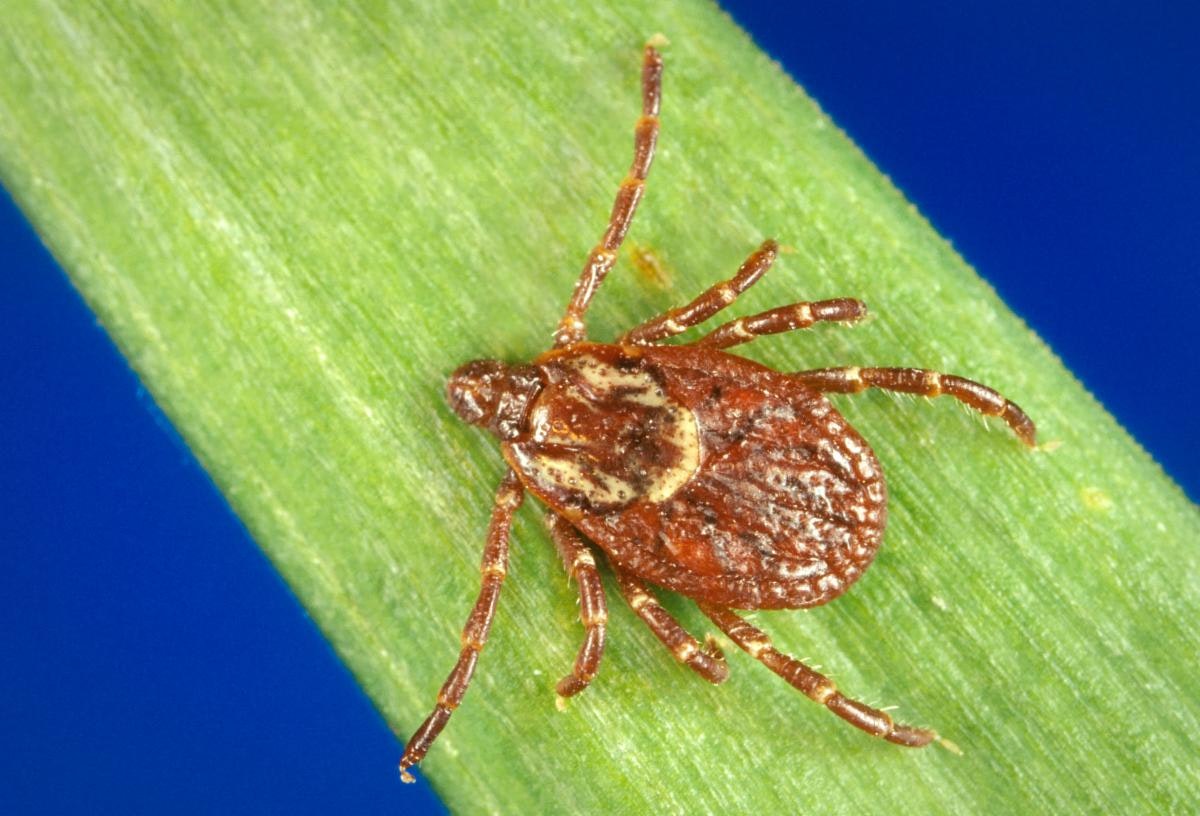Other Common Ticks

American dog ticks (Dermacentor variabilis) are found throughout much of the United States and have also been collected in Canada and Mexico. In Marin and Sonoma counties, these ticks can be found in large numbers in sunny, grassy habitats, particularly those near waterways. Adults can be found throughout the year but are most active March through July. They commonly feed on dogs and people, as well as a variety of carnivorous hosts. The nymphal stage of these ticks feed primarily on rodents and rabbits. Female American dog ticks are very similar to female Pacific Coast ticks both in size and markings, but the markings are more pronounced on the bodies of female American dog ticks. It is fairly easy to tell the males apart as the American dog ticks have more distinctive whitish markings on their bodies. The American dog tick can transmit Rocky Mountain spotted fever and tularemia.

Pacific Coast ticks (Dermacentor occidentalis) can be found in shrublands, chaparral and along hiking trails from Oregon to Mexico. Adults have been collected in California year-round, but are most abundant in the spring. They prefer to feed on deer, cattle, horses, and people. The immature nymphal stage of these ticks are most abundant in spring and summer, and feed primarily on rodents, especially squirrels.
In Marin and Sonoma counties, adults of this species are commonly found in the same habitats as western black-legged ticks. Pacific Coast ticks can be distinguished from western black-legged ticks by their coloring—they are brown with off-white mottling across their backs. The Pacific Coast tick can transmit Rocky Mountain spotted fever, Pacific Coast tick fever, Colorado tick fever, and tularemia.
